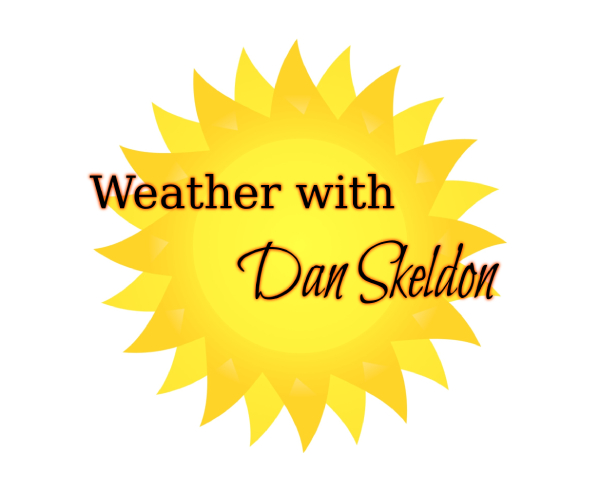Weather
By Dan Skeldon
When will the thunderstorms pop up tomorrow afternoon? What’s the best beach day this week? Can I get 18 holes in before the rain? Each summer here at the South Jersey shore, these are questions that your favorite broadcast meteorologist hopefully answers in every weathercast. But just like everything else today, there’s also an app for that. In fact, there are actually hundreds of weather apps available for download on your smartphone. Many are free and instantly ready to be your personal pocket forecaster. Others require either a one-time or annual payment. And there’s an app for just about every weather circumstance, from severe weather alerts and radars to hour-by-hour forecasts for your backyard.
So as a meteorologist, am I fearful for my job security? After all, other jobs have fallen victim to technology. And meteorologists don’t exactly have a clean track record either. Weather forecasting is an inexact science, something we are constantly reminded of via email, social media, or in person when a fickle South Jersey forecast goes awry. The short answer is no, even though admittedly I myself have about 20 weather apps downloaded to my phone.
The longer answer starts something like this: weather apps are a valuable supplemental tool in being “weather-wise.” For instance, having severe thunderstorm and tornado watches and warnings delivered to your phone has immense value. So does having a lightning tracker app if you spend a lot of time outdoors, like golfers, fishermen, and lifeguards. However, all the apps in the world can’t equate to a meteorologist, or a human forecaster, someone who lives and forecasts in your area.
Sure, I may be slightly biased, as I am a local meteorologist, one trying to compete in the increasingly competitive weather market. But I’m also a scientist who tries to look at any weather forecast objectively, even computer generated ones. And honestly, that’s what many apps offer you, a forecast based on one computer model, or perhaps a blend of several models. If that model or model blend is incorrect, then the forecast the app spits out will likewise be incorrect as well.
I think the most common instance I often run across to properly illustrate this is the popular hour-by-hour forecasts that some of the most popular weather apps offer. Simply open the app, and it will tell you precisely what the temperature, wind, and weather will be at 3pm the next afternoon for example, precisely when one app user may be getting married, or another plans on hitting the boardwalk. If that particular app shows a thunderstorm icon for 3pm that day, I’ve actually had people contact me to see if it was indeed true. Or worse yet, I’ve heard of others adjusting their plans to best fit the app’s forecast for dry weather.
I’ve been a meteorologist for 23 years, and I’ll be blunt in telling you that it’s difficult to forecast a thunderstorm to the exact hour it will hit the day of, and sometimes even the afternoon of, let alone one or more days out. Sure, I am comfortable, and usually fairly accurate, in providing time ranges, like 3-6pm for instance, when thunderstorms are most likely. But a precise hour? No, meteorology hasn’t come that far yet, despite big forecast strides over the last few decades.
And that’s what you get from a meteorologist, a human forecaster who weighs all the computer model guidance, biases, and trends. You get someone who will convey certainty and uncertainty in any given forecast, and express how much confidence a prediction has behind it. And you get someone with local knowledge, as living in the region you forecast for is invaluable. The longer you forecast for a particular area, the more you understand weather patterns, microclimates, and localized effects that no one computer model or app can account for.
Don’t get me wrong. Technology is a wonderful thing (most of the time), and the evolution of weather apps helps keep more people prepared and ahead of the storm, by having access to the latest information in the palm of your hand. Meteorologists have always strived to reach the most number of people possible, especially ahead of life-threatening weather events, like hurricanes or tornadoes for instance. And apps have helped us to do just that, more than any other recent innovation in technology.
But whether you have just one app you rely on or two dozen, use caution. Know what you are looking at, and remember that trust in a weather app should never be on the same level as trust in a human forecaster. I know that for many of my viewers, trust is not easily earned, and sometimes takes years or even decades (and few blown forecasts) to finally achieve. Do I think meteorologists will always be needed? Yes I do. But I also think apps can be a useful tool in our common goal of weather readiness and awareness.
Meteorologist Dan Skeldon has a degree in meteorology from Cornell University. He has forecasted the weather in South Jersey for the last 18 years, first on the former television station NBC40 and then on Longport Media radio. Dan has earned the American Meteorological Society Seal of Approval for Broadcast Meteorologists, and now does television broadcasts on WFMZ-TV in Pennsylvania’s Lehigh Valley.










